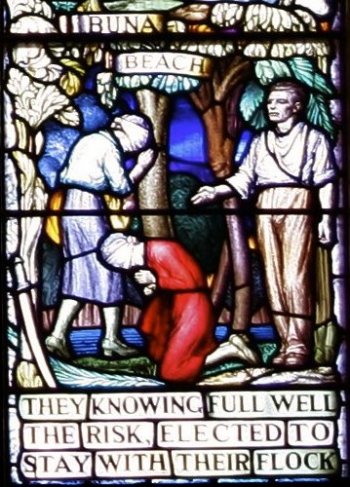
Maynard tells us that the right-hand light of the window is to be read from the bottom up, so the first scene to be considered is that of the bottom panel, labelled "Buna Beach". There are three figures in this scene—two women (who are blindfolded) and a man. These can be identified as Margery Brenchley and Lilla Lashmar from Sangara, and the carpenter, John Duffill, from Isivita; they were all beheaded on Buna Beach with two of the priests from the previous panel. Once again, the manner of their death is suggested by the presence of a naked sword standing prominently in the left foreground.
The representation of three martyrs in this final panel of the bottom row completes the portrayal of the ten people associated with the Anglican missions in New Guinea (as recognized in 1946) who perished during the Japanese invasion. As we have seen, the representations in these panels are symbolic rather than historical, and the combinations of figures are not always historically accurate; however, the realities of martydom are often depicted quite graphically.
Maynard's reading of Goodness, as exemplified in sacrifice and suffering, is completed by the faithfulness depicted in the caption of this right light:– "They knowing full well the risk, elected to stay with their flock."